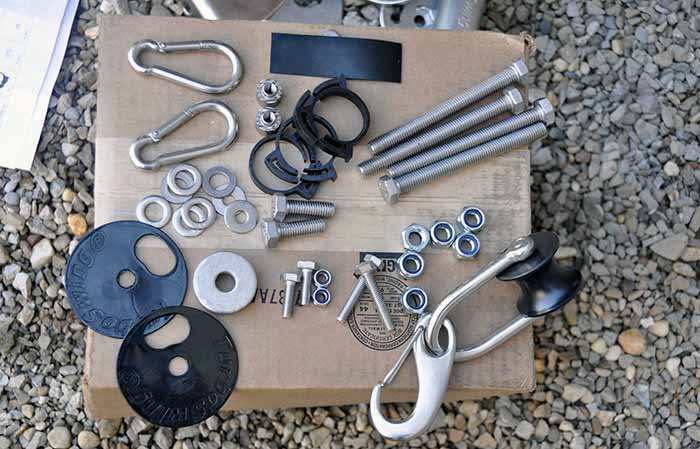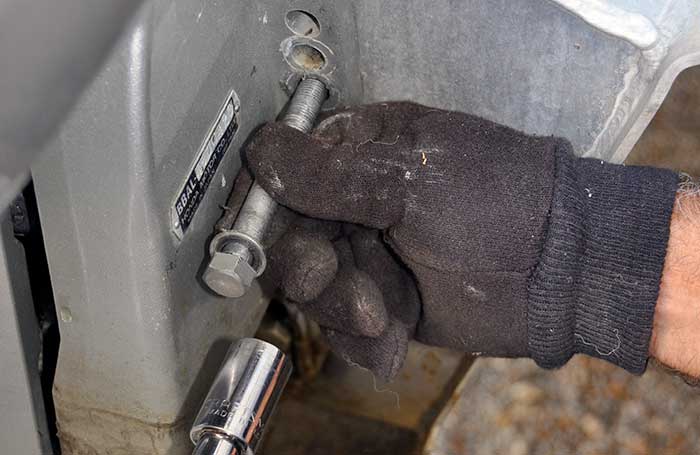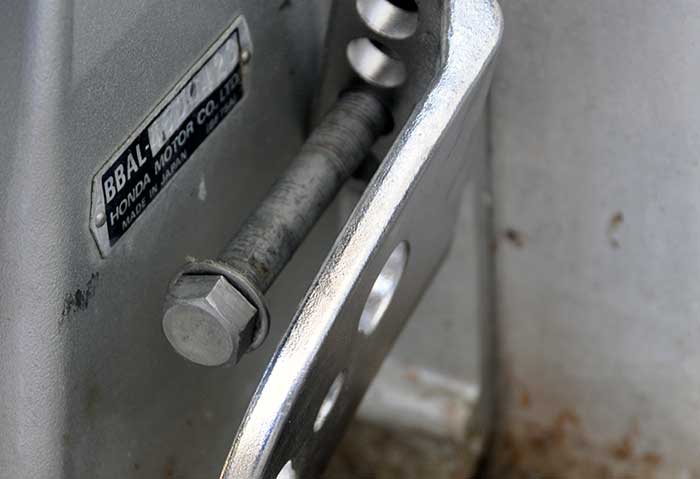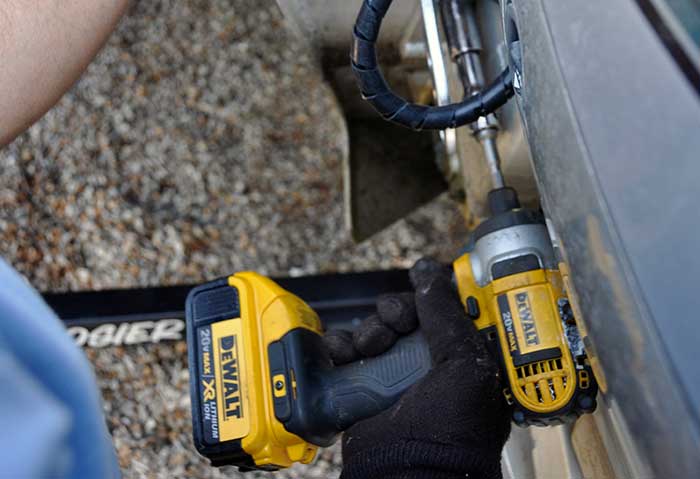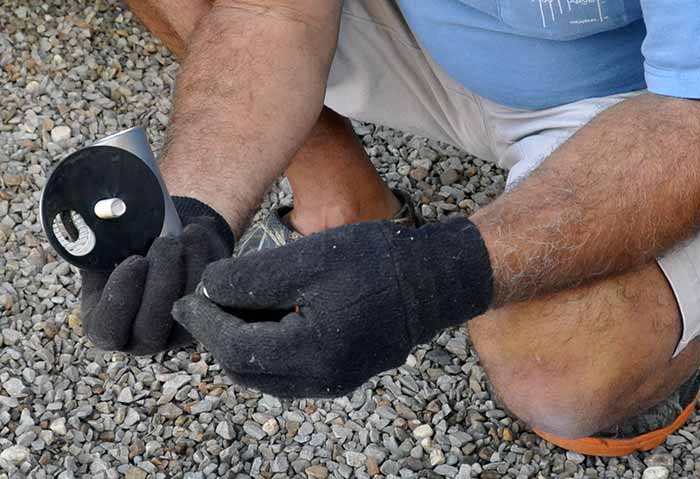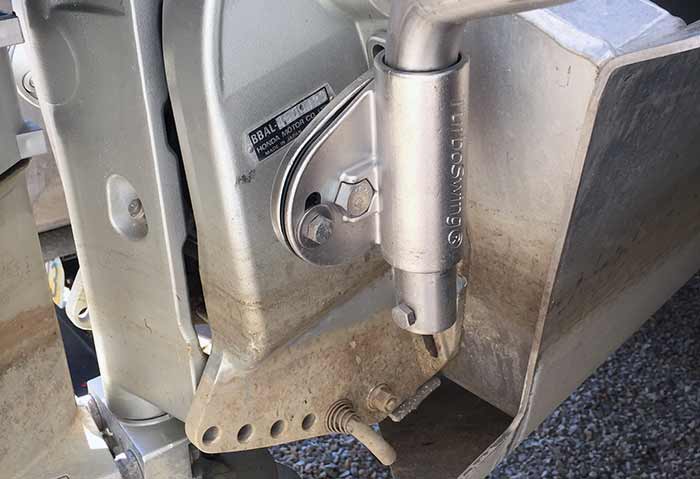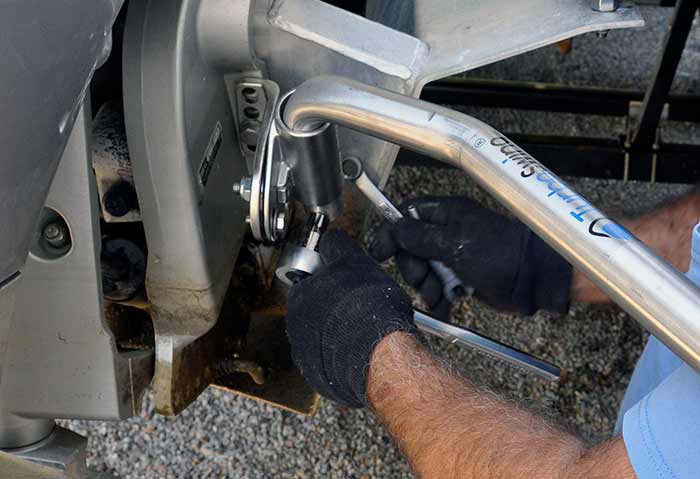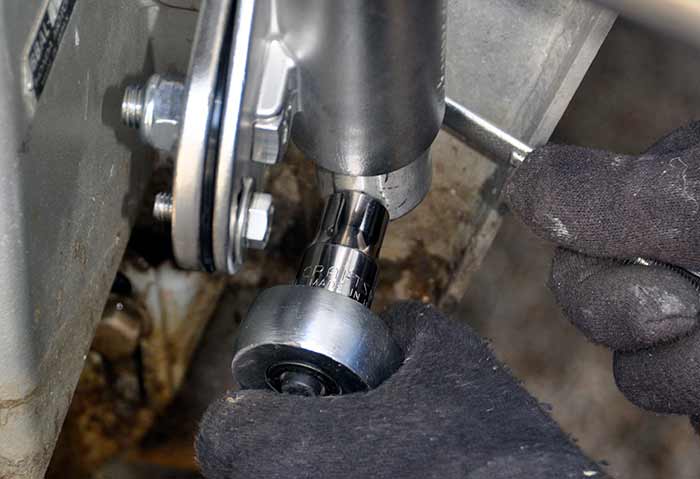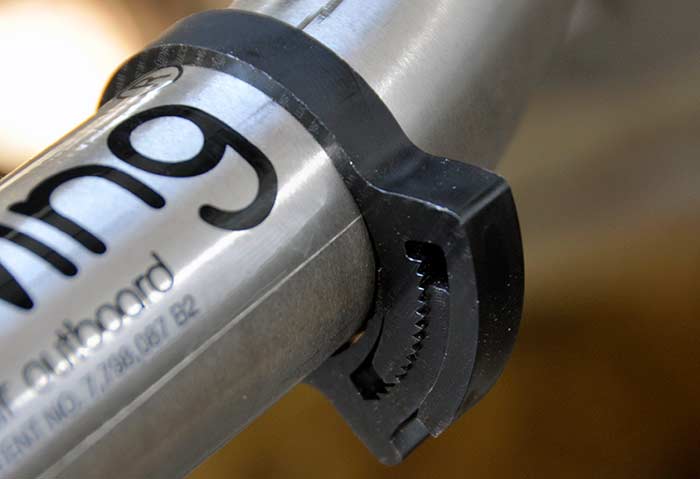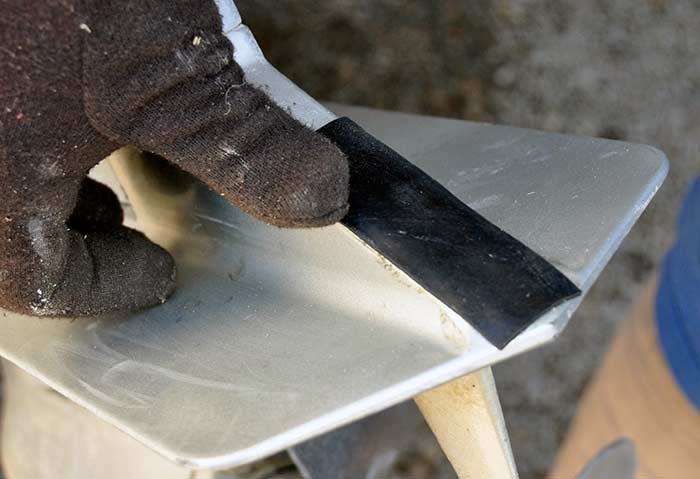Advertisement
No room for a dedicated tow pylon? Installing a TurboSwing could be the answer.
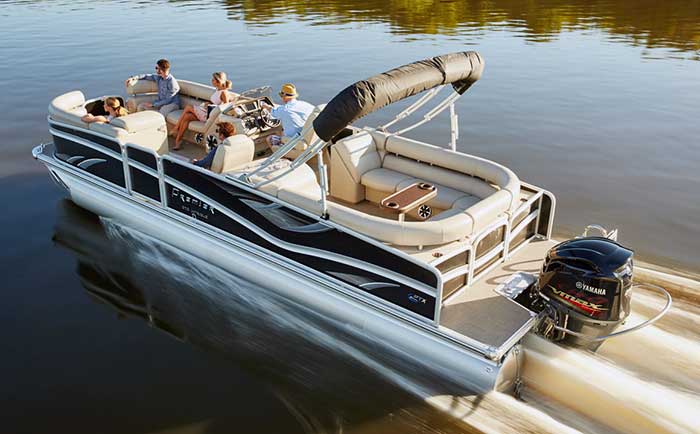
The TurboSwing sits well clear of the engine and allows towing of tubes and skiers on boats that don't have space for a pylon.
The TurboSwing tow system is a simple accessory that allows owners of outboard-powered boats and their passengers to enjoy active tow sports. The TurboSwing serves as a portable tow bar that elevates the tow rope out of the propwash and wake and, with its pulley system, allows the rope to slide from side to side, reducing slack and offering smooth, consistent pulling and maneuverability for those water skiing, wakeboarding, or tubing behind the boat.
The TurboSwing is easy to install and simple to remove from its receiver mounts, which are bolted to the engine brackets on each side of the outboard. A quick-release option allows the tow bar to be quickly taken off and stowed out of the way when the boat is being used for other activities. It doesn't interfere with boat or motor operation and can be left in place over the course of the season.
The location of the TurboSwing, centered around the engine, is key, as it enhances the outboard's dual role as the pivot point of the boat as well as the source of thrust. The proximity of the tow point to the power source also results in better boat handling and stability.
TurboSwing offers models for boats powered by outboards from 30 to 350 hp, including the TurboSwing-Twin models available for twin outboard applications. The TurboSwing has a maximum towing capacity of 600 pounds. Before installing, ensure that your boat's transom (and the boat itself) is capable of withstanding the additional stresses of your planned tow weight. Never exceed the manufacturer's limitations, and carefully become familiar with any different handling characteristics of your boat.
Technical Support
Degree Of Difficulty: Easy to moderate
Tools and Materials:- Wrenches
- Sealant
- Drill
Time: 2 hours.
Cost: Approximately $500 and up, depending on engine(s).
1. All the hardware is supplied for the TurboSwing installation. The installation video on TurboSwing's website is helpful. If you have a swim ladder, make sure there are no clearance issues.
2. Remove the nuts from the two thru-transom bolts on the outboard-motor mounting bracket.
3. Reattach nuts on bolts after placing the TurboSwing base over them. Put a glob of silicone mastic around the bolts to keep water from migrating into the transom core.
4. Using holes in your outboard's transom bracket as a guide, skip at least two holes from the existing bolt holes securing your outboard bracket to the transom and drill two 1/2-inch-diameter holes, one on each side of the outboard. Insert stabilizer bolts through the mounting bracket and transom hole, then seal and tighten the nuts.
5. Assemble the bar-holder tube and friction plate, aligning the angle with the teeth and grooves and securing with the locking nut.
6. Bolt the friction plate and tow-bar tube to the bracket. Slide the EZpulley onto the tow bar.
7. Place each bar end in the mounts. Adjust the angle.
8. We used the nuts and bolts provided to secure the bar in the mounts instead of the quick-release carabiners, which are an option.
9. Snaps on the tow bar keep the pulley from going too far to port or starboard.
10. Spread glue and adhere the provided protective rubber strip on the lower unit where the TurboSwing may make contact when the engine is tilted.

